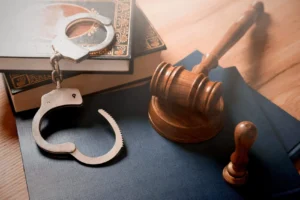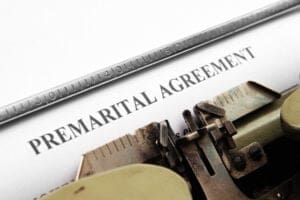Hit and Run Car Accident Legal Help: Comprehensive Rights Protection for American Drivers
Individuals involved in hit-and-run accidents frequently ask, “What legal options do I have when the other driver flees the scene?” The answer is that victims possess multiple legal avenues for recovery, including uninsured motorist claims, civil litigation if the perpetrator is identified, and potential criminal restitution through state prosecution. Unlike standard traffic accidents where fault determination involves straightforward insurance negotiations, hit and run car accident legal help requires sophisticated understanding of criminal law, insurance coverage gaps, and victim protection statutes.
Hit and run accidents represent a unique intersection of criminal and civil law that demands immediate legal intervention to preserve evidence, protect constitutional rights, and maximize recovery opportunities. The legal framework balances individual accountability with victim protection while ensuring due process for all parties involved in these complex cases.
What Constitutional Protections Apply to Hit and Run Accident Victims?
Due process rights under the Fifth and Fourteenth Amendments establish fundamental protections for hit-and-run victims seeking justice through both criminal prosecution and civil litigation. These constitutional principles ensure that victims receive fair treatment in legal proceedings while protecting their rights to pursue compensation through multiple legal channels.
The constitutional framework recognizes that hit-and-run accidents involve both criminal violations and civil torts, creating overlapping jurisdictions and remedies that require careful legal coordination. Victims possess constitutional rights to participate in criminal proceedings while simultaneously pursuing civil remedies without double jeopardy concerns.
Federal Oversight and State Implementation
State criminal statutes governing hit-and-run violations reflect the federal constitutional framework while allowing jurisdictional variation in penalties, procedures, and victim protection measures. Each state develops its own enforcement mechanisms, though federal coordination becomes necessary for interstate cases or when federal property is involved.
Local law enforcement agencies handle most hit-and-run investigations under state authority, though federal agencies may become involved when cases cross state lines or involve federal facilities. This decentralized approach allows states to tailor enforcement strategies to local conditions while maintaining constitutional compliance.
Interstate coordination through mechanisms like the Driver License Compact ensures that hit-and-run convictions receive recognition across state lines, preventing perpetrators from avoiding consequences through strategic relocation while protecting victims’ rights to pursue remedies in multiple jurisdictions.
How Do State Laws Create Different Penalties for Hit and Run Violations?
State variations in hit-and-run penalties reflect different policy approaches to balancing criminal deterrence with proportionate punishment based on accident severity. Some states impose felony charges for any hit-and-run involving injury, while others reserve felony treatment for serious injuries or fatalities.
Hawaii exemplifies comprehensive hit-and-run legislation with graduated penalties: Class B felony charges carrying up to 10 years imprisonment and $50,000 fines for accidents causing death or serious bodily injury, Class C felony charges with 5-year maximum sentences for substantial bodily injury, and misdemeanor charges for minor injuries1. These tiered approaches reflect different state priorities regarding deterrence and punishment proportionality.
Regional Approaches to Criminal Enforcement
Southern states generally maintain stricter hit-and-run penalties with longer sentences and higher fines, reflecting traditional law-and-order approaches to traffic crime enforcement. States like Texas impose third-degree felony charges for hit-and-run accidents involving fatalities, demonstrating regional commitment to serious criminal consequences.
Western jurisdictions often emphasize rehabilitation alongside punishment, with California providing comprehensive victim services and restorative justice options while maintaining substantial criminal penalties. These approaches reflect different regional philosophies about effective crime prevention and victim protection.
Northeastern states typically provide extensive victim advocacy services integrated with criminal prosecution, ensuring that victims receive comprehensive support throughout legal proceedings while pursuing maximum criminal accountability for perpetrators.
When Should Hit and Run Victims Seek Immediate Legal Representation?
Criminal investigation coordination requires immediate legal intervention to ensure victim rights receive proper protection during police investigations while preserving civil litigation options. Attorneys help victims navigate the complex relationship between criminal and civil proceedings without compromising either avenue for relief.
Evidence preservation becomes critical in hit-and-run cases where physical evidence may deteriorate rapidly and witness memories fade over time. Legal representation ensures systematic documentation of accident scenes, medical injuries, and property damage while coordinating with law enforcement investigations.
Time-Sensitive Legal Considerations
Statute of limitations requirements vary significantly between criminal prosecution timelines and civil litigation deadlines, requiring careful legal analysis to ensure all available remedies remain viable. Criminal statutes of limitations typically provide longer periods than civil claims, but both require prompt attention to preserve legal rights2.
Insurance notification deadlines impose strict timeframes for reporting hit-and-run accidents to insurance companies, with some policies requiring immediate notification and others allowing reasonable delay. Missing these deadlines can result in claim denials that eliminate important sources of compensation.
Medical documentation requirements demand immediate attention to establish causal relationships between accidents and injuries, particularly when delayed symptoms develop or existing conditions become aggravated. Professional legal guidance ensures proper medical record preservation and expert witness retention when necessary.
What Evidence Is Essential for Hit and Run Legal Claims?
Physical evidence from accident scenes provides crucial foundation for both criminal prosecution and civil litigation, including vehicle damage patterns, debris analysis, and skid mark measurements that can help identify fleeing vehicles and establish accident dynamics.
Witness testimony offers vital identification evidence when available, though witness reliability and memory accuracy require careful legal evaluation. Professional attorneys understand how to interview witnesses effectively while preserving their testimony for later proceedings through proper documentation procedures.
Technology and Surveillance Evidence
Traffic camera footage from intersections, businesses, and residential security systems increasingly provides objective evidence of hit-and-run accidents, though accessing this footage requires prompt legal action before automatic deletion occurs. Attorneys know how to quickly secure preservation orders and subpoena requests for critical video evidence.
Cell phone data and GPS tracking can provide circumstantial evidence about suspect vehicles’ locations during accident timeframes, though accessing this information requires sophisticated legal procedures and court orders that individual victims cannot obtain independently.
Medical records documenting injury patterns and treatment requirements establish damages for civil claims while providing evidence of accident severity for criminal prosecutions. Comprehensive medical documentation requires coordination between treating physicians and legal counsel to ensure admissibility and completeness.
How Do Insurance Coverage Options Protect Hit and Run Victims?
Uninsured motorist coverage provides the primary protection for hit-and-run victims when perpetrators cannot be identified or lack adequate insurance. This coverage treats hit-and-run drivers as uninsured motorists, allowing victims to recover damages from their own insurance policies subject to policy limits and deductible requirements.
Personal injury protection in no-fault insurance states like Hawaii provides immediate medical coverage regardless of fault determination, ensuring accident victims receive prompt medical care while criminal investigations and civil litigation proceed. This coverage eliminates delays in essential medical treatment that could complicate recovery.
Coverage Limitations and Coordination
Policy exclusions may limit coverage for certain types of damages or circumstances, requiring careful legal analysis to understand available benefits and potential gaps in protection. Professional legal review ensures victims understand their actual coverage while identifying additional compensation sources.
Subrogation rights allow insurance companies to recover payments from identified hit-and-run perpetrators, creating coordination issues between victim interests and insurer recovery efforts. Legal representation ensures that subrogation activities don’t compromise victim compensation while maximizing overall recovery potential.
Multiple coverage coordination becomes necessary when victims have coverage through multiple policies or when accidents involve commercial vehicles with additional insurance requirements. Understanding coordination rules prevents coverage disputes while ensuring maximum benefit utilization.
What Role Does Criminal Prosecution Play in Hit and Run Cases?
Criminal investigation serves dual purposes of holding perpetrators accountable while developing evidence that supports civil litigation efforts. Successful criminal prosecution often provides crucial admissions, witness testimony, and expert analysis that strengthens subsequent civil claims.
Victim participation rights in criminal proceedings include notification of court dates, opportunity to provide victim impact statements, and consultation regarding plea agreements. These rights ensure victim voices receive consideration throughout prosecution while protecting their interests in parallel civil proceedings.
Restitution and Criminal Remedies
Criminal restitution orders require convicted defendants to compensate victims for economic losses, providing an additional recovery avenue beyond civil litigation. However, restitution collection often proves challenging when defendants lack financial resources or attempt to avoid payment obligations.
Plea bargain considerations may affect both criminal punishment and civil litigation strength, requiring victim input to ensure plea agreements don’t compromise overall justice objectives. Professional legal representation ensures victim interests receive proper consideration during plea negotiations.
Appeal rights protect both prosecution and defense interests while ensuring victim participation in appellate proceedings when necessary. Understanding appeal timelines and procedures helps victims maintain involvement throughout extended criminal proceedings.
How Do Civil Litigation Options Complement Criminal Prosecution?
Independent civil proceedings allow victims to pursue compensation regardless of criminal case outcomes, with different burden of proof standards that may permit civil recovery even when criminal prosecution fails. Civil litigation focuses on compensation rather than punishment, providing broader recovery opportunities for comprehensive damages.
Damage categories in civil hit-and-run cases include medical expenses, lost wages, property damage, pain and suffering, and punitive damages when applicable. Professional legal representation ensures comprehensive damage calculation while presenting persuasive cases for maximum compensation awards.
Strategic Litigation Considerations
Discovery procedures in civil cases provide broader information-gathering tools than criminal investigations, allowing attorneys to examine defendant finances, insurance coverage, and other relevant factors affecting recovery potential. This additional information often reveals assets or coverage not apparent during criminal proceedings.
Settlement negotiations offer opportunities for resolution without trial risks, though settling requires careful evaluation of all potential damages and recovery sources. Professional negotiation ensures settlements reflect full compensation value while considering enforcement challenges and collection prospects.
Judgment enforcement presents significant challenges when defendants lack obvious assets or attempt to hide wealth through various schemes. Experienced attorneys understand asset location techniques and enforcement mechanisms that maximize judgment collection prospects.
What Challenges Do Hit and Run Victims Face in Legal Proceedings?
Identification difficulties create the most significant obstacle in hit-and-run cases, as legal remedies depend heavily on locating responsible parties. Even comprehensive evidence gathering may not produce sufficient information for definitive identification, limiting legal options to insurance coverage and general victim compensation programs.
Insurance coverage disputes frequently arise when insurance companies challenge whether accidents qualify as hit-and-run incidents or attempt to deny coverage based on policy interpretation. These disputes require sophisticated legal analysis of policy language, state insurance regulations, and applicable case law precedents.
Procedural and Evidentiary Obstacles
Witness reliability issues complicate identification efforts when witness accounts conflict or prove inaccurate over time. Professional legal evaluation helps distinguish reliable witnesses from those whose testimony may be compromised by limited observation opportunities or memory deterioration.
Evidence degradation occurs rapidly in hit-and-run cases as physical evidence disappears and memories fade, requiring immediate legal intervention to preserve crucial information. Delayed legal representation often means lost opportunities for evidence preservation that could determine case outcomes.
Jurisdictional complications arise when hit-and-run accidents occur near state borders or involve drivers from different states, creating complex legal questions about applicable law and court jurisdiction. These issues require sophisticated legal analysis to ensure cases proceed in appropriate forums under correct legal standards.
How Do Different Types of Hit and Run Accidents Affect Legal Strategies?
Pedestrian hit-and-run cases typically involve more severe injuries and stronger public policy concerns about pedestrian safety, often resulting in enhanced criminal penalties and more favorable civil litigation environments. These cases require specialized medical expertise and accident reconstruction analysis to establish liability and damages.
Property damage only hit-and-run incidents involve different strategic considerations, with emphasis on vehicle repair costs, rental car expenses, and diminished value claims rather than medical injuries. However, these cases still require prompt legal attention to preserve evidence and maximize recovery opportunities.
Commercial Vehicle Considerations
Commercial driver involvement creates additional liability sources through employer vicarious liability and commercial insurance requirements. These cases often involve higher insurance policy limits and more sophisticated defense strategies that require experienced legal representation to navigate successfully.
Rideshare and delivery vehicle hit-and-run accidents present complex insurance coverage issues involving personal auto policies, commercial coverage, and platform company insurance. Understanding these layered coverage arrangements requires specialized legal expertise to ensure comprehensive recovery.
Government vehicle involvement adds sovereign immunity considerations and special procedural requirements that significantly affect litigation strategy and timeline. These cases require attorneys familiar with governmental liability rules and specialized claim procedures.
What Role Do Expert Witnesses Play in Hit and Run Legal Cases?
Accident reconstruction specialists provide crucial testimony about accident dynamics, vehicle speeds, and impact patterns that can help identify suspect vehicles and establish liability. Their analysis often proves essential for both criminal prosecution and civil litigation success.
Medical experts establish causal relationships between accidents and injuries while providing comprehensive damage assessments for compensation calculations. Professional medical testimony helps distinguish accident-related injuries from pre-existing conditions while supporting comprehensive damage claims.
Technical and Forensic Expertise
Forensic evidence analysis including paint transfer, glass fragments, and metal debris can provide definitive links between suspect vehicles and accident scenes. Expert interpretation of forensic evidence often proves crucial for identification and liability establishment.
Economic damage specialists calculate comprehensive loss assessments including future medical expenses, lost earning capacity, and life care planning costs. Their analysis ensures damage calculations reflect full compensation requirements while supporting settlement negotiations or trial presentations.
Surveillance technology experts help locate and preserve video evidence while providing technical analysis of recorded footage. Their expertise proves essential for maximizing technology-based evidence while ensuring admissibility in legal proceedings.
How Do No-Fault Insurance Laws Affect Hit and Run Claims?
Personal injury protection requirements in no-fault states like Hawaii provide immediate medical coverage and wage replacement regardless of fault determination, ensuring hit-and-run victims receive prompt benefits while pursuing additional compensation sources. This coverage provides crucial financial stability during extended legal proceedings.
Threshold requirements for pursuing civil litigation vary among no-fault states, with some requiring specific injury severity levels or medical expense minimums before allowing tort claims. Understanding these thresholds helps determine whether civil litigation remains viable alongside PIP benefits3.
Coverage Coordination in No-Fault Systems
Subrogation limitations in no-fault systems may restrict insurance company recovery rights while preserving victim compensation opportunities. These limitations often benefit victims by preventing insurer claims that could reduce net compensation amounts.
Additional coverage benefits may include rehabilitation services, attendant care, and other specialized benefits that extend beyond basic medical coverage. Professional legal representation ensures victims understand and utilize all available benefits while coordinating multiple coverage sources.
Interstate no-fault coordination creates complexity when accidents involve drivers from different states with varying no-fault requirements. Legal expertise helps navigate these complex coordination rules while ensuring maximum benefit utilization.
What Immediate Steps Should Hit and Run Victims Take?
Emergency response priorities include ensuring personal safety, calling 911 for medical attention and police response, and beginning evidence preservation efforts if safely possible. Prompt emergency response protects both immediate health needs and long-term legal interests.
Evidence documentation should begin immediately with photographs of vehicle damage, accident scenes, and any visible injuries. Witness contact information collection and detailed written descriptions of events help preserve crucial evidence before memories fade or physical evidence disappears45.
Professional Consultation Requirements
Legal consultation should occur as soon as possible after emergency medical needs are addressed, as early legal intervention preserves more options while preventing procedural mistakes that could compromise recovery opportunities. Many personal injury attorneys provide free consultations for hit-and-run cases.
Insurance notification must occur promptly according to policy requirements, though victims should consider legal consultation before providing detailed statements to insurance companies. Professional guidance ensures proper claim handling while protecting legal rights throughout the process.
Medical documentation requires comprehensive evaluation even when injuries seem minor, as some accident-related conditions may develop gradually over time. Proper medical documentation establishes injury causation while providing foundation for damage claims.
How Do Interstate Hit and Run Cases Create Additional Complexity?
Multi-state jurisdiction issues arise when hit-and-run accidents involve drivers from different states or when suspects flee across state lines after accidents. These situations require coordination between different law enforcement agencies and may involve federal authorities when interstate flight occurs.
Choice of law questions affect both criminal prosecution and civil litigation when parties have connections to multiple states with different legal standards. Professional legal analysis determines applicable law while ensuring cases proceed under most favorable legal frameworks for victim interests.
Federal Coordination and Resources
Federal investigation resources may become available for interstate hit-and-run cases, particularly when organized criminal activity is suspected or when cases involve federal facilities or personnel. These resources can significantly enhance identification and prosecution prospects.
Interstate compact coordination ensures that driver license actions and criminal convictions receive recognition across state lines, preventing hit-and-run offenders from avoiding consequences through relocation while protecting public safety through information sharing.
Victim assistance programs may provide federal funding for victim services in qualifying interstate cases, supplementing state and local resources while ensuring comprehensive support throughout legal proceedings.
What Long-Term Considerations Affect Hit and Run Legal Strategy?
Statute of limitations planning requires careful attention to different limitation periods for criminal prosecution, civil litigation, and insurance claims. Strategic timing ensures all available legal remedies remain viable while coordinating multiple proceedings effectively2.
Asset protection concerns may affect collection strategies when defendants attempt to shield assets from judgment enforcement. Professional legal representation includes asset investigation and collection planning to maximize recovery potential over extended timeframes.
Future Medical and Economic Impacts
Life care planning becomes necessary for serious injury cases requiring ongoing medical treatment, rehabilitation, or permanent care arrangements. Comprehensive planning ensures damage calculations reflect full future needs while supporting maximum compensation awards.
Vocational rehabilitation may be necessary when injuries prevent return to previous employment, requiring expert analysis of alternative career options and retraining needs. Professional vocational assessment supports comprehensive damage claims while ensuring realistic rehabilitation planning.
Family impact considerations include consortium claims for spouses and family members affected by serious injuries or fatalities. Understanding these additional damage categories ensures comprehensive compensation while providing family members appropriate legal representation.
How Do Technology Advances Affect Hit and Run Legal Cases?
Digital evidence sources continue expanding with smartphone technology, vehicle computer systems, and widespread surveillance networks providing new identification opportunities. Legal strategies must adapt to utilize these technological resources while addressing privacy concerns and admissibility requirements.
Social media investigation often provides crucial evidence when suspects post information about accidents or vehicle damage on social platforms. Professional investigation techniques help locate relevant social media evidence while ensuring proper preservation and authentication procedures.
Emerging Investigation Tools
Artificial intelligence analysis of video footage and traffic patterns may enhance identification capabilities while reducing investigation time and costs. However, AI evidence requires careful authentication and reliability analysis to ensure courtroom admissibility.
Vehicle tracking technology including GPS systems and automatic crash notification may provide location data relevant to hit-and-run investigations. Accessing this data requires proper legal procedures while balancing privacy rights with investigation needs.
Crowdsourced investigation platforms allow public assistance in locating suspect vehicles, though managing public involvement requires professional coordination to prevent interference with official investigations while maximizing identification opportunities.
What Alternative Dispute Resolution Options Exist for Hit and Run Cases?
Mediation opportunities may arise when hit-and-run perpetrators are identified and seek to resolve civil claims outside traditional litigation. Professional mediation can provide faster resolution while ensuring comprehensive compensation consideration and proper legal documentation.
Arbitration agreements occasionally appear in insurance policy disputes regarding hit-and-run coverage, requiring specialized legal representation familiar with insurance arbitration procedures and standards. These proceedings often determine crucial coverage questions affecting overall recovery potential.
Settlement Considerations and Negotiations
Structured settlements may provide advantageous payment arrangements for substantial hit-and-run recoveries, particularly in serious injury cases requiring long-term care funding. Professional analysis ensures settlement structures meet future needs while providing tax advantages and payment security.
Confidentiality agreements in settlement negotiations require careful consideration of their impact on criminal prosecution and public safety concerns. Legal representation ensures settlement terms don’t compromise other legal proceedings while protecting victim interests comprehensively.
Payment security measures become crucial when settling with defendants of questionable financial stability, requiring security arrangements that guarantee payment performance while protecting against future collection difficulties.
How Do Victim Compensation Programs Support Hit and Run Victims?
State victim compensation programs provide financial assistance for crime victims when other resources prove insufficient, offering payments for medical expenses, lost wages, and other accident-related costs. These programs serve as safety nets when insurance coverage or civil recovery prove inadequate.
Federal victim assistance resources may supplement state programs in qualifying cases, particularly when federal crimes occur or when cases involve interstate elements. Understanding federal resource availability ensures comprehensive victim support throughout legal proceedings.
Program Eligibility and Coordination
Application requirements for victim compensation programs include cooperation with law enforcement, timely application filing, and documentation of expenses and losses. Professional legal assistance ensures program eligibility while maximizing available benefits.
Coverage limitations in victim compensation programs may exclude certain types of damages or impose benefit caps that require supplementation through other sources. Understanding these limitations helps develop comprehensive compensation strategies utilizing multiple funding sources.
Program coordination with insurance benefits and civil recovery requires careful planning to avoid benefit reduction while maximizing overall compensation. Professional coordination ensures optimal utilization of all available resources while preventing administrative complications.
What Professional Qualifications Should Hit and Run Attorneys Possess?
Criminal law experience proves essential for attorneys handling hit-and-run cases, as understanding criminal procedure, evidence rules, and prosecution strategies significantly enhances civil representation quality. Attorneys should demonstrate experience with both prosecution and defense perspectives in criminal matters.
Personal injury expertise remains crucial for developing comprehensive damage claims and negotiating maximum settlements or trial verdicts. Hit-and-run cases require sophisticated understanding of injury evaluation, medical evidence, and damage calculation methods.
Specialized Knowledge Requirements
Insurance law familiarity becomes essential given the complex coverage issues that frequently arise in hit-and-run cases. Attorneys should understand policy interpretation, coverage disputes, and coordination rules affecting multiple insurance sources.
Investigation capabilities or coordination with professional investigators help maximize evidence preservation and perpetrator identification opportunities. Attorneys should maintain relationships with qualified investigators, accident reconstruction specialists, and forensic experts.
Trial experience remains important even when cases settle, as insurance companies and defendants evaluate settlement demands based on attorney trial capabilities and success records. Demonstrated trial competence strengthens negotiation positions significantly.
How Do Recent Legal Trends Affect Hit and Run Case Strategy?
Technology integration in legal practice offers new tools for case investigation, evidence presentation, and client communication that can improve case outcomes while reducing costs. Modern hit-and-run representation increasingly relies on technological resources for evidence analysis and case management.
Alternative dispute resolution growth provides additional options for case resolution while reducing court system burden and litigation costs. Professional attorneys understand when alternative resolution methods serve client interests best while maintaining litigation options when necessary.
Emerging Legal Developments
Privacy law evolution affects evidence gathering procedures as digital privacy rights expand, requiring careful balance between investigation needs and privacy protection obligations. Legal strategies must adapt to changing privacy standards while maintaining investigation effectiveness.
Insurance industry changes including new coverage options and policy modifications affect hit-and-run protection availability and claim procedures. Staying current with insurance developments ensures optimal coverage advice and claim strategy development.
Legislative updates in criminal penalties, victim protection measures, and court procedures require ongoing attention to ensure legal strategies remain current and effective. Professional legal representation includes monitoring legal developments that affect client interests.
The constitutional framework surrounding hit-and-run accidents reflects fundamental American principles about individual accountability, victim protection, and due process that ensure fair treatment for all parties while providing multiple avenues for justice and compensation. Due process requirements protect both victim rights and defendant protections throughout criminal and civil proceedings.
State variations in hit-and-run laws demonstrate federalism principles at work, with different jurisdictions developing enforcement strategies that reflect local priorities while maintaining constitutional compliance. These differences require sophisticated legal understanding when cases involve multi-state elements or venue selection considerations.
Modern technological developments continue expanding investigation capabilities and evidence sources while creating new challenges regarding privacy rights and evidence authentication. Professional legal representation ensures technology utilization while maintaining admissibility standards and ethical compliance.
The complexity of hit-and-run legal cases requires comprehensive understanding that encompasses criminal law, civil litigation, insurance coverage, and victim services coordination. Professional legal assistance proves essential for protecting victim rights while maximizing recovery opportunities through multiple available channels.
Hit-and-run accident victims benefit from immediate professional consultation to preserve evidence, protect legal rights, and develop comprehensive recovery strategies utilizing all available legal and financial resources. The intersection of criminal accountability and civil compensation creates opportunities for comprehensive relief that requires sophisticated legal coordination to achieve optimal outcomes.
Modern hit-and-run legal representation reflects the evolution of legal practice to address changing technology, transportation systems, and social expectations while maintaining core principles of accountability and victim protection. Understanding these developments remains essential for effective legal advocacy that serves both individual clients and broader public safety interests in deterring irresponsible driving behavior through comprehensive legal consequences.
- FindLaw Hit and Run Victim First Steps Legal Guide
- Justia Criminal Hit and Run Traffic Offenses Encyclopedia
- Nolo Legal Encyclopedia Hit and Run Car Accidents Coverage
- Enjuris Hawaii Hit and Run Laws and Legal Options
- Wikipedia Hit and Run Legal Definition and Overview
- Taylor Francis Academic Journal Traffic Safety Research
- NCBI Research on Traffic Accident Legal and Medical Issues
- Utrecht Law Review Academic Legal Research Article
- NCBI Academic Study on Accident Response and Legal Framework
- State Farm Insurance Hit and Run Response Guide


















